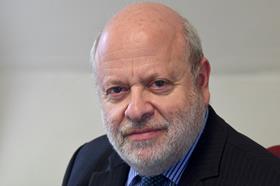All solicitors – or at any rate all solicitors for whom the Law Society had up-to-date email addresses through MySRA or My Law Society – recently had the opportunity to vote on two questions about the composition of the Law Society Council.

Of all the issues facing the profession at the moment (the pandemic, legal aid rates, unregulated legal services providers), the composition of the Law Society Council comes fairly near the bottom of the list, if not right at the bottom. Who cares?
Yet at the same time one of the ever-trending gripes about the Law Society is that it is not doing enough, or sometimes indeed even anything, for the profession. To remedy that, the composition of the Council plays a singular part.
Not many solicitors participated in the ballot. A total of 12,207 votes were cast, from 200,446 eligible voters, a turnout of 6.1%. There were two resolutions – more on them below – and they were both carried by an average of 80% of the votes across the two.
There was vigorous prior debate in the Council. An agreed starting point among most was that the composition of the Council and the composition of the profession no longer matched. It was about how to resolve that mismatch that the arguments developed.
The mismatch is exemplified in the following cases, which are only a selection:
- in-house solicitors now make up 23% of the profession (14% in commerce), but only 9% of Council members (3% from commerce);
- major corporate and business law firms house 50% of the profession, but only 15% of Council come from such firms;
- 70% of the profession have fewer than 20 years of post-qualification experience, but only 24% of Council fall in that category.
If the Council were not to grow in size, and many think it is already too big at 100 members, then a reallocation would have to take place within the existing figures. Some group allocations would have to shrink, and others increase. It was proposed that the main shrinkage should take place in the group with the greatest allocation, which is that containing the geographical seats, since constituencies cover our whole jurisdiction. But that would mean that geographical Council members, elected by local members, would have to cover much larger areas, sometimes with new boundaries not reflective of existing and long-used borders. That caused much resentment.
There were other flash-points, this time in work areas, since the Council is made up of geographical seats and seats which represent sectors of law (and there are further types of seats, too). For instance, for personal injury there were representations that both claimant and defendant interests should be represented.
The reallocation of seats was not the only issue. It made up the first of two resolutions put to the profession. The second concerned the length of time that Council members should be permitted to stay on the Council. At present, there is no maximum term, and the proposal was that there should be a 12 year limit. This also provoked fierce debate.
On the one hand, opponents of a maximum term argued that there is no such term for members of parliament. Constituents should have the right to continue to be represented by someone of their choice, and it is undemocratic to limit that right. In addition, valuable corporate memory is retained by those who have served longer.
On the other hand, supporters of a maximum term pointed to existing codes of good governance, which strongly favour a turnover in the ruling bodies of organisations, to ensure wider and more diverse representation and fresh ideas. If there is no term on membership, entrenched groupings can arise which may dominate discussions and so the direction of policy.
The difficulty in deciding which way to vote is that, in my view, both sides were right on both resolutions. For me, it was never a matter of one side being right and the other wrong. It was a question of weighing them both, and deciding on balance from my own perspective.
So I voted for the reallocation of seats so as better to reflect the current composition of the profession, while fully realising that the solution was not – and maybe no solution could be – perfect, and that a number of Council members would struggle with unwieldy geographical areas.
I also voted for a maximum term on Council membership because, in my own experience of staying for a long time within organisations, I found that I ran out of ideas and forward energy after around 12 years - while fully realising that we may lose valuable members and corporate memory that way, and that not everyone will respond to length of service in the same way.
This is often our democratic fate, a weighing up between two nearly equal options rather than a clear choice.
Jonathan Goldsmith is Law Society Council member for EU matters and a former secretary general of the Council of Bars and Law Societies of Europe. All views expressed are personal and are not made in his capacity as a Law Society Council member, nor on behalf of the Law Society






























